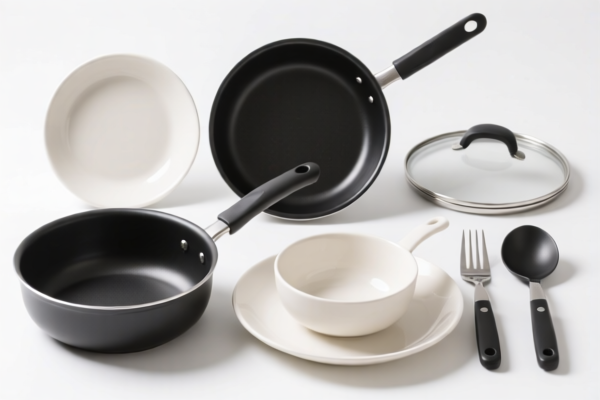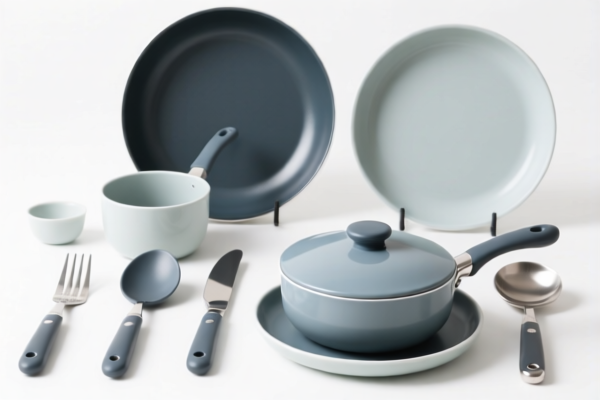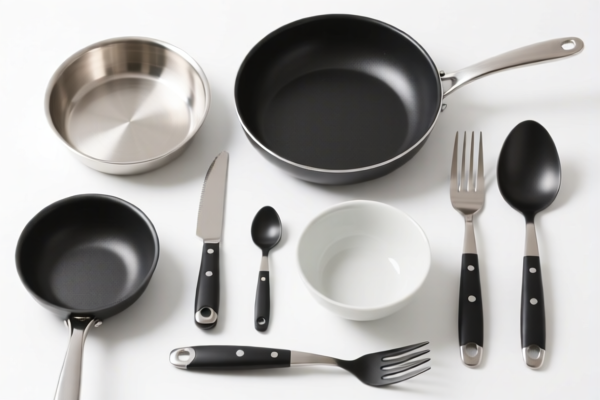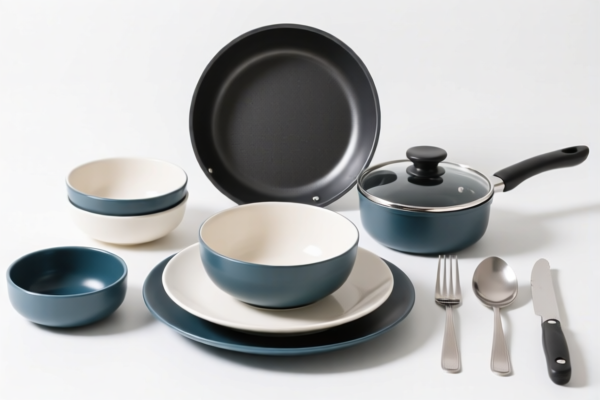| HS Code | Official Doc | Tariff Rate | Origin | Destination | Effective Date |
|---|---|---|---|---|---|
| 6911103510 | Doc | 63.5% | CN | US | 2025-05-12 |
| 6911103710 | Doc | 45.5% | CN | US | 2025-05-12 |
| 6912003510 | Doc | 39.8% | CN | US | 2025-05-12 |
| 6912003910 | Doc | 34.5% | CN | US | 2025-05-12 |
| 7013411000 | Doc | 52.5% | CN | US | 2025-05-12 |
| 7013421000 | Doc | 42.5% | CN | US | 2025-05-12 |
| 3924101000 | Doc | 33.4% | CN | US | 2025-05-12 |
| 3924102000 | Doc | 44.0% | CN | US | 2025-05-12 |
| 3924103000 | Doc | 42.8% | CN | US | 2025-05-12 |
| 3924104000 | Doc | 33.4% | CN | US | 2025-05-12 |
| 7323999030 | Doc | 83.4% | CN | US | 2025-05-12 |
| 4419909100 | Doc | 40.7% | CN | US | 2025-05-12 |




Okay, let's break down these HS codes for your tableware sets. I'll provide a structured explanation, focusing on the key aspects of each code and potential implications for import.
Understanding HS Codes: A Quick Primer
HS codes (Harmonized System codes) are internationally standardized codes used to classify traded products. The first 6 digits are generally consistent worldwide, while additional digits can vary by country (like the US in this case). Here's how to read them:
- Chapter (First 2 digits): Broad category of the product.
- Heading (Next 2 digits): More specific classification within the chapter.
- Subheading (Next 2 digits): Even more detailed classification.
- Additional Digits (US Specific): Further refine the classification for US import regulations.
Let's analyze each HS code you provided:
1. 6911.10.35.10 – Tableware of Porcelain/China (Sets, Value ≤ $56)
- 69: Ceramic products.
- 11: Tableware, kitchenware, etc., of porcelain or china.
- 35: Sets.
- 10: Specifically for sets with an aggregate value not exceeding $56.
- Tax: 26.0% Basic Duty + 7.5% Additional Duty (Total 63.5%). Important: This code is for lower-value sets.
- Note: The "additional U.S. note 6(b)" refers to specific US regulations regarding the composition and value of these sets.
2. 6911.10.37.10 – Tableware of Porcelain/China (Sets, $56 < Value ≤ $200)
- 69: Ceramic products.
- 11: Tableware, kitchenware, etc., of porcelain or china.
- 37: Sets.
- 10: Specifically for sets with an aggregate value over $56 but not exceeding $200.
- Tax: 8.0% Basic Duty + 7.5% Additional Duty (Total 45.5%).
- Note: Higher value sets have a lower duty rate.
3. 6912.00.35.10 – Ceramic Tableware (Sets, Value ≤ $38, Not Porcelain/China)
- 69: Ceramic products.
- 12: Ceramic tableware, kitchenware, etc., other than porcelain or china.
- 35: Sets.
- 10: Specifically for sets with an aggregate value not exceeding $38.
- Tax: 9.8% Basic Duty + 0.0% Additional Duty (Total 39.8%).
4. 6912.00.39.10 – Ceramic Tableware (Sets, Value > $38, Not Porcelain/China)
- 69: Ceramic products.
- 12: Ceramic tableware, kitchenware, etc., other than porcelain or china.
- 39: Sets.
- 10: Specifically for sets with an aggregate value over $38.
- Tax: 4.5% Basic Duty + 0.0% Additional Duty (Total 34.5%).
5. 7013.41.10.00 – Glass Tableware (Lead Crystal, Value ≤ $1/piece)
- 70: Glass and glass products.
- 13: Glassware of a kind used for table, kitchen, etc.
- 41: Of lead crystal.
- 10: Valued not over $1 each.
- Tax: 15.0% Basic Duty + 7.5% Additional Duty (Total 52.5%).
6. 7013.42.10.00 – Glass Tableware (Non-Lead Crystal, Pressed/Toughened)
- 70: Glass and glass products.
- 13: Glassware of a kind used for table, kitchen, etc.
- 42: Of glass having a specific thermal expansion coefficient.
- 10: Pressed and toughened (specially tempered).
- Tax: 12.5% Basic Duty + 0.0% Additional Duty (Total 42.5%).
7. 3924.10.10.00 – Plastic Tableware (Dispensers)
- 39: Plastics and articles thereof.
- 24: Tableware, kitchenware, etc., of plastics.
- 10: Salt, pepper, mustard dispensers, etc.
- Tax: 3.4% Basic Duty + 0.0% Additional Duty (Total 33.4%).
8. 3924.10.20.00 – Plastic Tableware (Plates, Cups, Bowls, etc.)
- 39: Plastics and articles thereof.
- 24: Tableware, kitchenware, etc., of plastics.
- 20: Plates, cups, saucers, etc.
- Tax: 6.5% Basic Duty + 7.5% Additional Duty (Total 44.0%).
9. 3924.10.30.00 – Plastic Tableware (Trays)
- 39: Plastics and articles thereof.
- 24: Tableware, kitchenware, etc., of plastics.
- 30: Trays.
- Tax: 5.3% Basic Duty + 7.5% Additional Duty (Total 42.8%).
10. 3924.10.40.00 – Plastic Tableware (Other)
- 39: Plastics and articles thereof.
- 24: Tableware, kitchenware, etc., of plastics.
- 40: Other.
- Tax: 3.4% Basic Duty + 0.0% Additional Duty (Total 33.4%).
11. 7323.99.90.30 – Iron/Steel Tableware (Food Contact)
- 73: Iron or steel articles.
- 23: Table, kitchen or household articles of iron or steel.
- 99: Other.
- 30: Kitchen or tableware suitable for food or drink contact.
- Tax: 3.4% Basic Duty + 25.0% Additional Duty (Total 83.4%). Important: This code has a very high duty rate due to the additional duty.
12. 4419.90.91.00 – Wood Tableware (Other)
- 44: Wood and articles of wood.
- 19: Furniture and parts thereof.
- 90: Other.
- 91: Other.
- Tax: 3.2% Basic Duty + 7.5% Additional Duty (Total 40.7%).
Important Considerations & Recommendations:
- Material is Key: The distinction between porcelain/china vs. ceramic vs. plastic vs. glass vs. metal is critical for correct classification.
- Aggregate Value: Pay close attention to the aggregate value of the sets, as this significantly impacts the duty rate.
- 2025.4.2 Duty Changes: Be aware of the upcoming duty changes on April 2, 2025. The additional duties will increase to 30% for many of these codes.
- US Notes: The references to "additional U.S. note 6(b)" mean you should consult the official Harmonized Tariff Schedule of the United States (HTSUS) for detailed regulations.
- Certifications: Depending on the material and intended use (especially for food contact items), you may need certifications like FDA compliance for plastics or lead/cadmium testing for ceramics/glass.
- Precise Description: Ensure your customs declaration accurately describes the materials, composition, and intended use of the products.
- Consult a Broker: For complex shipments or if you're unsure about classification, it's highly recommended to work with a licensed customs broker.
To help me refine this further, could you tell me:
- What is the primary material of the tableware sets you are importing?
- What is the typical aggregate value of a set?
- Are the items intended for direct food contact?
- Do you have any specific certifications for these products?
Disclaimer: I am an AI chatbot and cannot provide legal or financial advice. This information is for general guidance only. Always consult with a qualified professional for specific import/export regulations.
Customer Reviews
No reviews yet.